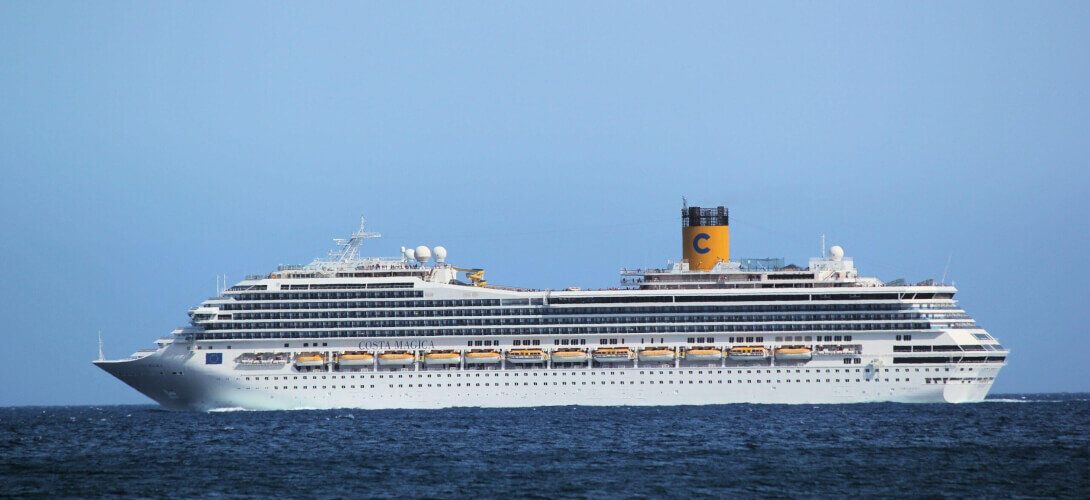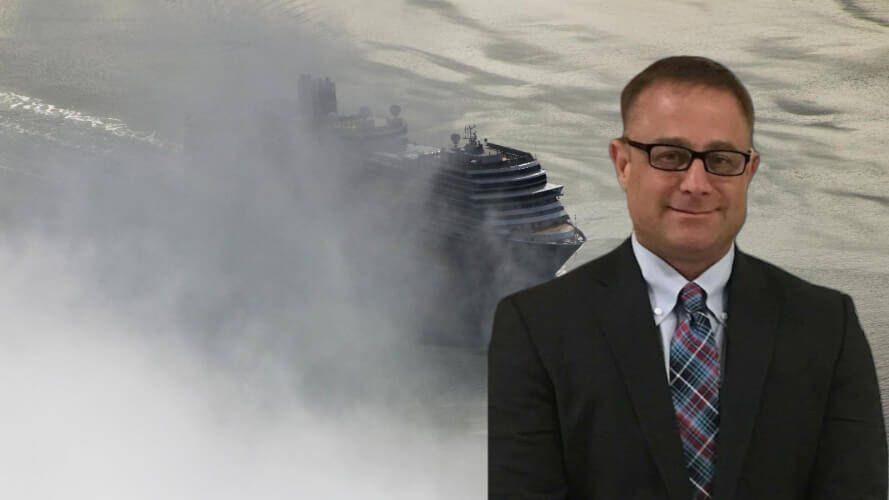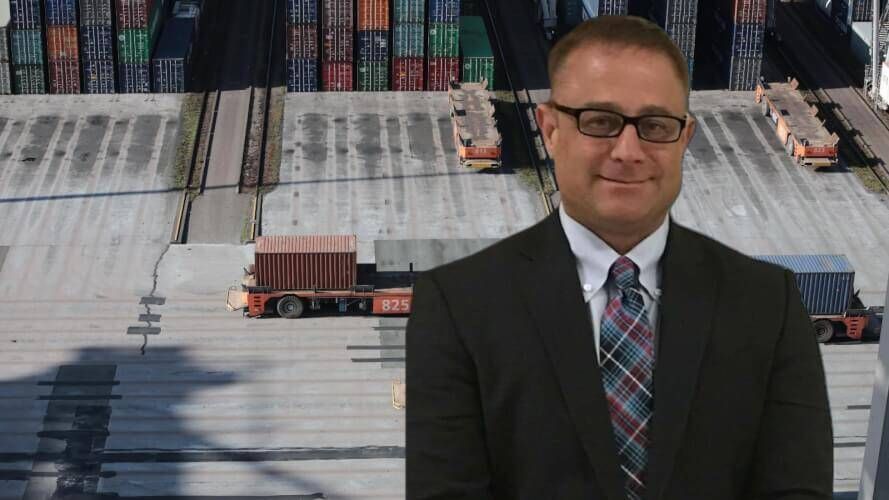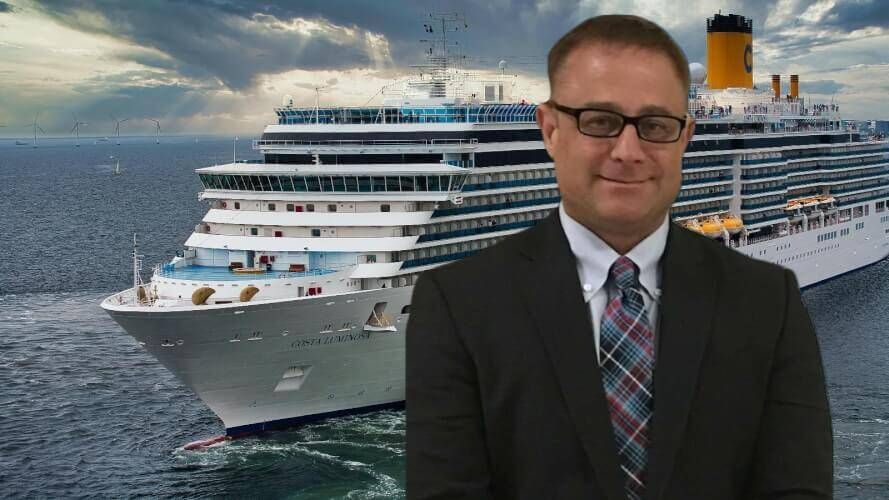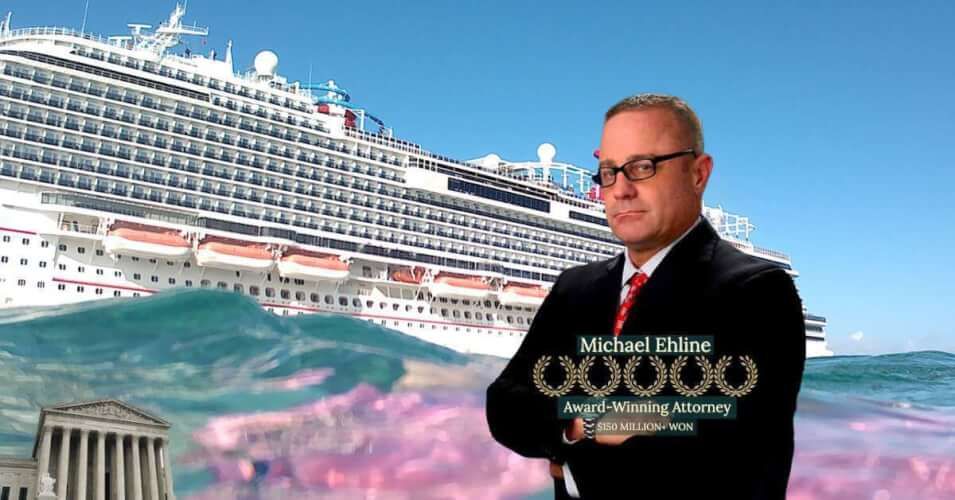With so many overboard incidents on cruise ships and the recent Covid-19 outbreak on Princess Cruise, it raises some troubling questions on whether any regulatory bodies enforce cruise ship laws and ensures the protection of cruise ship passengers.
Previously, there were no regulations pertaining to cruise ships when the industry first began, but over time, the federal government gave authority to different organizations and introduced legislation that would ensure the safety of cruise ship passengers.
Ehline Law and our cruise ship accident attorneys have more than 15 years of experience handling cruise ship accident claims with a superior track record in applying relevant laws and recovering compensation for our injured clients.
Our cruise ship accident attorneys have deep knowledge of cruise ship laws and have discussed the relevant legislation on media channels such as CNN, NBC, and CBS. Let’s look at the regulatory bodies and the regulations surrounding the cruise industry.
Regulatory Authorities
Many different regulatory bodies enforce cruise ship laws during cruise operations, which may vary from one aspect of the cruise ship to another. Regulatory authorities are responsible for setting comprehensive standards pertaining to different aspects of the cruise, such as safety, security, health, environment, and the cruise ship workers. Some of these regulatory authorities include the following.
US Coast Guard
The US Coast Guard is responsible for enforcing and regulating cruise ship safety. Every cruise ship has to follow the vessel inspection laws of the flag it holds, meaning cruise ships registered in a particular country must follow the inspection laws of that country.
However, when these cruise ships take on passengers at any port in the United States, they must follow the International Convention for the Safety of Life at Sea and any other regulations that may apply to the cruise ship.
These regulations may pertain to structural fire protection, watercraft integrity, environmental protection, and many other aspects of the cruise ship.
To ensure that the cruise ships follow the applicable laws in the United States, the US Coast Guard has the duty to conduct routine operations on the cruise ships.
Centers for Disease Control and Prevention (CDC)
The US Centers for Disease Control and Prevention (CDC) is the country’s top science-based, data-driven service organization that takes measures and creates awareness in order to protect the public’s health.
It may seem unconventional for the CDC to work with cruise lines in enforcing regulations, but the organization has had the authority since 1944 after the passing of the US Federal Law, the Public Health Service Act.
In 1944, the newly instated law gave the federal government the authority to prevent the introduction, transmission, and spread of infectious diseases from other countries into the US.
In 1970, the CDC created the Vessel Sanitation Program to prevent gastrointestinal (GI) illnesses on cruise ships. Since cruise ships visit foreign countries where passengers disembark and then return to the United States, there may be a risk of spreading diseases, making it the responsibility of the CDC to enforce and implement health and safety regulations.
In January 2020, the CDC issued a “No Sail” order following the outbreaks of Covid-19 on the Diamond Princess and Grand Princess cruise ships.
Environmental Protection Agency (EPA)
The Environmental Protection Agency is a federal government agency whose mission is to protect human and environmental health. As the cruise ship industry grows, there is an alarming concern over the environmental impacts the industry may have, especially pertaining to cruise ship discharges.
The EPA has produced an overarching report that examines five different types of cruise ship discharges and discusses the following:
- The acceptable amount of waste generated by cruise ships
- The laws that apply to waste generation on cruise ships
- How the cruise ships should manage their waste
- The impact of cruise ship waste on the environment
- The actions the federal government has taken to address cruise ship waste
- Alternatives to addressing cruise ship waste in the future
The Environmental Protection Agency is responsible for enforcing cruise ship waste laws by conducting inspections and taking action against cruise lines that violate applicable laws.
Who Enforces Cruise Ship Laws: International Regulators and What They Oversee
International Labour Organization
The International Labour Organization focuses on advancing social and economic justice by setting international labor standards.
The International Labour Organization is responsible for introducing and implementing laws that protect seafarers. It establishes the standards for minimum conditions for “decent work” and many other issues such as discrimination, safety at sea, minimum wages, pension, and conditions of employment, among other issues.
World Health Organization
The World Health Organization (WHO) is responsible for international public health and works to promote health, keep the world safe, and serve the vulnerable. During the recent Covid-19 pandemic, we saw how the WHO played an active role in creating a checklist and providing a handbook (manual) for cruise ships to follow to prevent the spread of the coronavirus.
WHO reaches out to relevant organizations in the country to inform them of violations and requires them to take suitable measures or enforce laws to prevent the spreading of diseases.
For example, if the WHO suspects a serious disease aboard a US cruise ship, it will work with relevant authorities in the port countries, such as the CDC in the United States, to prevent the spread of the disease.
International Maritime Organization
The International Maritime Organization (IMO) is a specialized agency of the United Nations that sets standards for shipping, the safety of life at sea, and related issues. It is responsible for developing and maintaining a comprehensive regulatory framework for shipping that includes environmental concerns, legal matters, cruise vessel security, and other aspects of international shipping.
In 1973, the IMO hosted an international gathering where they decided to tackle the oil spill issues following the tanker Torrey Canyon incident, the largest environmental disaster that pushed 120,000 tons of crude oil into the English Channel.
Following the gathering, the IMO introduced guidelines that would help prevent large ship accidents and provide information on how to deal with environmental disasters.
Inspection and Enforcement
There are three layers of inspection and enforcement of international laws on cruise ships, including the following.
Port States
When a cruise ship visits another country, the port state has the authority to carry out necessary inspections and enforce international and national laws, including local regulations. These port states have the responsibility to enforce compliance where required.
Countries of Registration
Before issuing registration to a cruise ship, the flag state (where the cruise ship is registered) must ensure that the ship complies with all international and national requirements.
It is important to note that cruise lines register themselves in the country with relaxed laws, allowing them to operate without the US Coast Guard breathing on their necks.
Classification Societies
A ship classification society establishes and maintains standards pertaining to cruise ship construction and operation and offshore structures. Other societies also enforce domestic and international laws on cruise ships and ensure that the cruise ships follow applicable standards pertaining to environmental guidelines, safety, construction design, and other aspects.
These organizations (local and international) mentioned above constantly update their local or international regulations and lobby for laws that align with their mission. They may host annual or semi-annual meetings and general sessions whenever required to convey their message to the cruise industry.
Regulating the Cruise Industry Is Challenging
The cruise industry’s contribution to the US economy grew to $55.5 Billion in 2019, and it continues to expand as prices for a cruise ticket fall and the number of cruise passengers increases. As these companies get bigger, their control or power over bills and legislation becomes stronger.
An example of the cruise industry’s influence on Congress is visible with the Hammer Law bill introduced by Senator Deb Fischer. The bill looked at expanding protection to cruise ship passengers and their families by making additional compensation recoverable for nonpecuniary damages.
Considered a revolutionary bill backed by the American Association for Justice, it was a great move that would hold the cruise lines responsible for their actions. However, major cruise lines used their power and influence to block the bill.
The cruise industry spends millions every year to protect its own interests. In 2019, Carnival Cruise Line spent $400,000 in lobbying bills, and this is just one company out of the 50 cruise lines that make up the Cruise Lines International Association.
In 2020, the Norwegian Cruise Line Holdings, Carnival Corp, and Royal Caribbean cruise line released over $40,000 to senators to help them block laws that would damage the profit margins and reduce the influence of cruise lines in the United States.
When asked why they try to lobby such laws that protect the interests of cruise ship passengers, the Cruise Lines International Association argues that cruise ships are the safest mode of transportation, highlighting a reduction of 37% in cruise ship accidents from 2009 to 2018.
However, these figures do not match the government statistics that suggest an increase of 30% in cruise ship crimes. As the cruise lines get bigger with every passing year, they’ll gain more power and influence, allowing them to control cruise ship laws.
But, we at Ehline Law are not afraid to enforce cruise ship laws against cruise lines to protect the rights of our clients suffering from cruise ship injuries and get them the compensation they deserve.
Schedule a Free Consultation with Ehline Law
If you’ve suffered injuries on a cruise vacation, contact us at (833) LETS-SUE for a free consultation to discuss your case, as you may be able to seek compensation.
Our cruise ship accident attorneys have a deep understanding of local and international laws and maritime law, and we can help assess your claim, build a strong case, and fight for the compensation you deserve!
